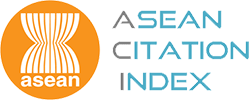อันตรายด้านจุลินทรีย์และจุดควบคุมวิกฤติของการผลิตข้าวมันไก่ อาหารกลางวันในโรงเรียน Microbiological Hazards and Critical Control Points of the School Lunch Production of Khao Man Kai
Keywords:
อันตรายด้านจุลินทรีย์ จุดควบคุมวิกฤติ การบริการอาหารในโรงเรียน ข้าวมันไก่ Microbiological Hazard, Critical Control Points, School lunch food service, Khao Man KaiAbstract
บทคัดย่อ งานวิจัยมีวัตถุประสงค์เพื่อศึกษาอันตรายด้านจุลินทรีย์ของการผลิตข้าวมันไก่เพื่อบริการในโรงเรียน วิเคราะห์อันตรายและจุดวิกฤติที่ต้องควบคุมในขั้นตอนการผลิตอาหารตามหลักการ HACCP เนื่องจากเป็นอาหารที่มีรายงานอุบัติการณ์การเกิดโรคอาหารเป็นพิษมากที่สุดและเกิดอย่างต่อเนื่อง ผลการวิเคราะห์จุลินทรีย์ในวัตถุดิบสด พบเชื้อจุลินทรีย์ทั้งหมด (TPC) ในวัตถุดิบสดทุกชนิดและพบเชื้อ Escherichia coli ในใบเตย ฟักเขียวและขิงแก่ และพบเชื้อ Salmonella ในไก่ดิบ หลังผ่านขั้นตอนการให้ความร้อนที่อุณหภูมิน้ำเดือดไม่พบเชื้อ TPC และเชื้อจุลินทรีย์ก่อโรค (Salmonella, Clostridium perfringens, Staphylococcus aureus และ Bacillus cereus) ในวัตถุดิบ แต่พบเชื้อ TPC และเชื้อ S. aureus ในไก่ต้มสุกหั่นและมีจำนวนเพิ่มขึ้นเมื่อตั้งรอบริการที่อุณหภูมิห้องตามระยะเวลาที่เพิ่มขึ้น และในข้าวมันไก่พร้อมบริการพบเชื้อ TPC, S. aureus, B. cereus และ E. coli ดังนั้นการผลิตข้าวมันไก่ปริมาณมากจึงมีอันตรายด้านจุลินทรีย์ในไก่ต้มสุกหั่นแล้วและตั้งรอบริการที่อุณหภูมิห้อง ซึ่งการผลิตอาหารปริมาณมากจะมีการผลิตหลายรอบ อาหารผลิตในรอบแรกๆจึงต้องตั้งรอบริการเป็นระยะเวลานาน (มากกว่า 4 ชั่วโมง) ทำให้มีความเสี่ยงต่อการเพิ่มจำนวนของจุลินทรีย์ การวิเคราะห์จุดควบคุมวิกฤติของการผลิตข้าวมันไก่ในโรงเรียนจากการใช้ Decision tree ได้แก่ ขั้นตอนการใช้ความร้อนในการประกอบอาหารและการเก็บอาหารรอบริการที่อุณหภูมิห้อง ซึ่งค่าวิกฤติของการให้ความร้อนและการตั้งรออาหารไว้บริการอ้างอิงตามข้อกำหนดด้านความปลอดภัยของอาหาร (Food Code)คำสำคัญ : อันตรายด้านจุลินทรีย์ จุดควบคุมวิกฤติ การบริการอาหารในโรงเรียน ข้าวมันไก่ ABSTRACT The objectives of this research were to study microbiological hazard and to establish the critical control points (CCP) of Khao Man Kai production for school lunch according to HACCP principles. This food has the most and continually food poisoning report. From the result of microbiological analysis showed total aerobic plate count (TPC) contaminated in all raw ingredients and Escherichia coli in pandanus leaf, gourds, gingers and Salmonella in raw chickens. After heating process; the TPC and pathogen counts (Salmonella, Clostridium perfringens, Staphylococcus aureus and Bacillus cereus) were not detected in all ingredients while the TPC and S. aureus were presented in sliced cooked chicken and increased as a longer holding time. The TPC, S. aureus, B. cereus and E. coli were detected in Khao Man Kai that was ready to serve. The microbial hazard for the production of Khao Man Kai in school lunch was found in sliced cooked chickens that hold at ambient temperature. So the mass production was cooked many batches of food in advance. It was found that the first batch was held for a longer time (more than 4 hours) before being served which the risk of increased microbial numbers. The determination of the critical control points (CCPs) for the production of Khao Man Kai in school lunch was conducted by the use of a decision tree. The CCPs were the heating process and holding cooked food at room temperature for a long time before serving. The critical limit of the heating process and holding time room temperature are as follows by the Food Code. Kewords: Microbiological Hazard, Critical Control Points, School lunch food service, Khao Man KaiDownloads
Download data is not yet available.
Downloads
How to Cite
แจ่มผล อ., อุทัยพัฒนาชีพ อ., มหากาญจนกุล ว., & ลิ้มสุวรรณ ท. (2015). อันตรายด้านจุลินทรีย์และจุดควบคุมวิกฤติของการผลิตข้าวมันไก่ อาหารกลางวันในโรงเรียน Microbiological Hazards and Critical Control Points of the School Lunch Production of Khao Man Kai. Science Essence Journal, 31(2), 41–58. Retrieved from https://ejournals.swu.ac.th/index.php/sej/article/view/6923
Issue
Section
Research Article








